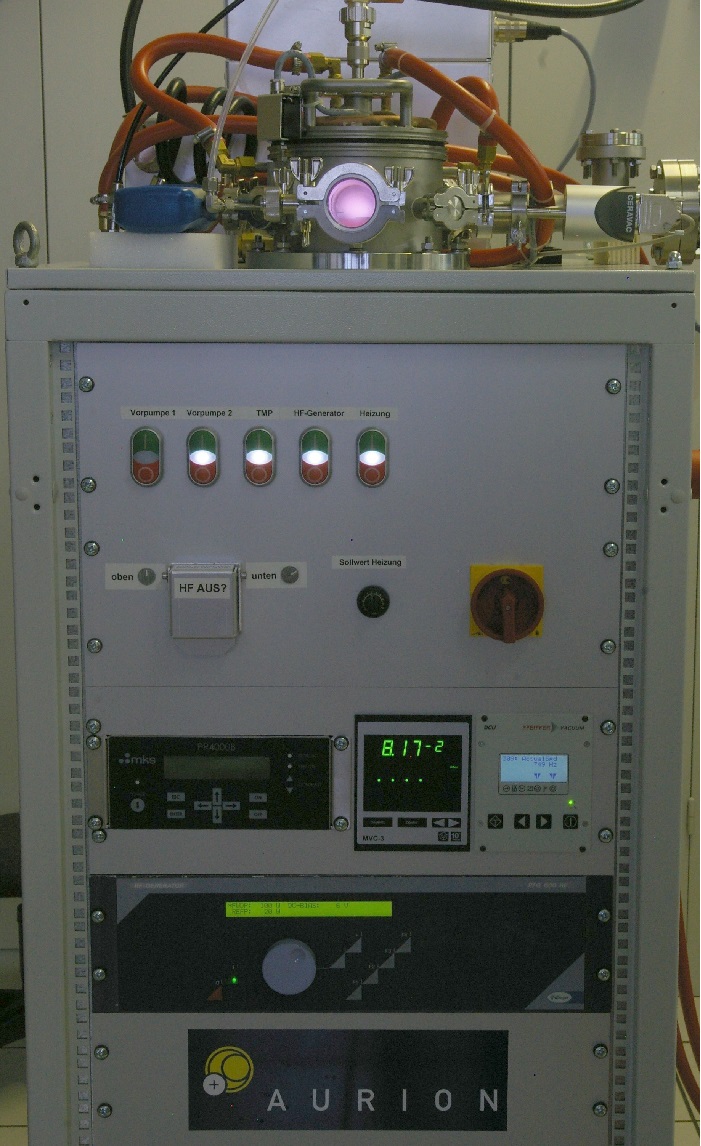RIE-Systems
RIE-Systems by Aurion Anlagentechnik GmbH
Aurion Anlagentechnik GmbH
Beschreibung
RIE-Systems (Reactive Ion Etching Systems)
1. Introduction
Reactive Ion Etching (RIE) is a plasma-based dry etching process used in microfabrication to create precise and highly controlled patterns on materials such as silicon, oxides, nitrides, and metals. RIE systems are essential in industries like semiconductors, MEMS, photonics, and nanotechnology due to their high selectivity, anisotropic etching capabilities, and fine process control. 🔹 Key Applications:✔ Semiconductor device fabrication (etching of Si, SiO₂, Si₃N₄)
✔ MEMS (Micro-Electro-Mechanical Systems) manufacturing
✔ Photonic devices (waveguides, gratings)
✔ Nanoimprint lithography
✔ Hard mask and thin-film structuring
2. How RIE Works
RIE combines chemical and physical etching mechanisms:- Plasma generation (using RF power) excites process gases (e.g., SF₆, CF₄, Cl₂, O₂).
- Chemical reaction of reactive species removes material selectively.
- Ion bombardment enhances etching directionality (anisotropy).
3. Key Features of RIE Systems
Feature Function Benefit Vacuum Chamber Holds the sample in a controlled plasma environment Ensures contamination-free processing RF Power Supply (13.56 MHz) Generates plasma by ionizing process gases Precise etching control Gas Flow Control (MFCs) Regulates the flow of etching gases Stable and repeatable process conditions Electrode Biasing Controls ion energy at the substrate Adjusts etching rate and selectivity Temperature Control Maintains substrate at optimal temperature Reduces damage and improves uniformity Endpoint Detection (OES, Laser Interferometry) Monitors etching progress in real time Enhances precision and reproducibility4. Types of RIE Systems
RIE Type Description Typical Use Cases Standard RIE Parallel-plate plasma etching with moderate anisotropy Microelectronics, MEMS ICP-RIE (Inductively Coupled Plasma) High plasma density, independent ion energy control Deep silicon etching, high aspect ratio structures DRIE (Deep Reactive Ion Etching - Bosch Process) Alternating etch/passivation cycles for vertical profiles MEMS, high-aspect-ratio trenches5. Advantages of RIE Systems
✅ High Anisotropy – Creates vertical sidewalls for precision patterning✅ Material Selectivity – Allows selective etching with minimal substrate damage
✅ Reproducibility – Automated process control ensures uniform results
✅ Scalability – Systems available for R&D to high-volume production
6. Conclusion
RIE systems are critical for advanced nanofabrication processes, offering precise, controlled, and selective etching of a wide range of materials. Modern RIE technologies such as ICP-RIE and DRIE enable high-aspect-ratio structures essential for next-generation microelectronics, MEMS, and photonics applications.Produktparameter
Coating
Activation of Plastic Surfaces
High degree of degreasing
Activate and clean surfaces
Das könnte Sie auch interessieren


